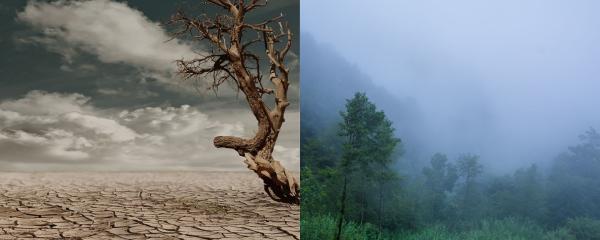
IIT Palakkad study shows how different indices used to predict drought combined with effects fof climate change can lead to different climate predictions for the future

IIT Palakkad study shows how different indices used to predict drought combined with effects fof climate change can lead to different climate predictions for the future
The forest owlet (Heteroglaux blewitti), an owl endemic to the forests of Central India, has been the centre of a century-old debate among ornithologists. Its classification into the particular genera is at the stem of this debate. Now, a new study by researchers, involving genetic analysis of the owl’s genome, may put an end to this debate forever.
Tuberculosis(TB) has claimed 1.8 million human lives globally according to World Health Organization, in 2015. Despite Bacillus Calmette-Guerin (BCG) vaccine, the only available vaccine for TB, currently one-third of the world is latently infected with TB due to the incompetence of BCG in adults against Mycobacterium tuberculosis, the bacteria responsible for TB.
The 28th of February every year is celebrated across the country as ‘National Science Day’ to commemorate the discovery of ‘Raman effect’ by Sir C V Raman. About 90 years ago, Sir Chandrasekhara Venkata Raman, had a ‘eureka moment’ when he discovered how light scattered when it travelled in a transparent medium. After two years, this discovery won India her first Nobel Prize in Physics, for a work that was carried out entirely in India.
“Honesty is the best policy - when there is money in it”, quipped Mark Twain.
Though the abilities of computers have increased exponentially, recognising sarcastic commentary such as “being awake at 4am with a headache is fun”, still remains a challenge. Unlike humans, who use visual and physical cues like rolling of eyes to detect sarcasm, computers have to rely only on text. For the past decade, linguistic studies have accelerated enhancements in computational irony.
Erik Solenheim, Executive Director of the United Nations Environment Programme visited Center for Ecological Sciences at Indian Institute of Science (IISc), Bengaluru to deliver a talk about the interface of science and policy.
In his talk titled ‘Science Policy Interface: Insights and ideas for a changing world’ Mr. Solenheim spoke about the three main environmental challenges of we face today namely; climate change, pollution and loss of biodiversity.
Professor Ashutosh Sharma, Secretary, Department of Science and Technology and Department of Biotechnology, India and Professor Stephen Toope, Vice-Chancellor, University of Cambridge, along with other researchers from the University of Cambridge and from various Indian research institutions met today in New Delhi to formalise the launch of TIGR2ESS – an acronym for “Transforming India’s Green Revolution by Research and Empowerment for Sustainable food Supplies”.
Researchers from Indian Institute of Technology Indore, Indore have developed shape controlled cobalt ferrite nanoparticles, which can be used to accurately measure the humidity of a region.
Dr. Harsh Vardhan, Hon’ble Union Minister for Science and Technology, Environment, Forest and Climate Change and Earth Sciences, Govt. of India visited the Centre for Research and Education in Science and Technology (CREST), Indian Institute of Astrophysics (IIA) at Hosakote. He was welcomed by Prof. P Sreekumar, Director of IIA and Prof. G C Anupama, Dean and Professor-in-charge of CREST and others at CREST.
Whales are magnificent creatures. Not only are they the some of the largest mammals on the planet, they also have the longest mammal migrations. Why and how do whales migrate? And what are some of the challenges they face on the way?
Researchers from Indian Institute of Technology Kanpur, Kanpur have come up with a potential roadmap to control diesel engine pollution, by looking at the different techniques available to curb emissions from a diesel engine.